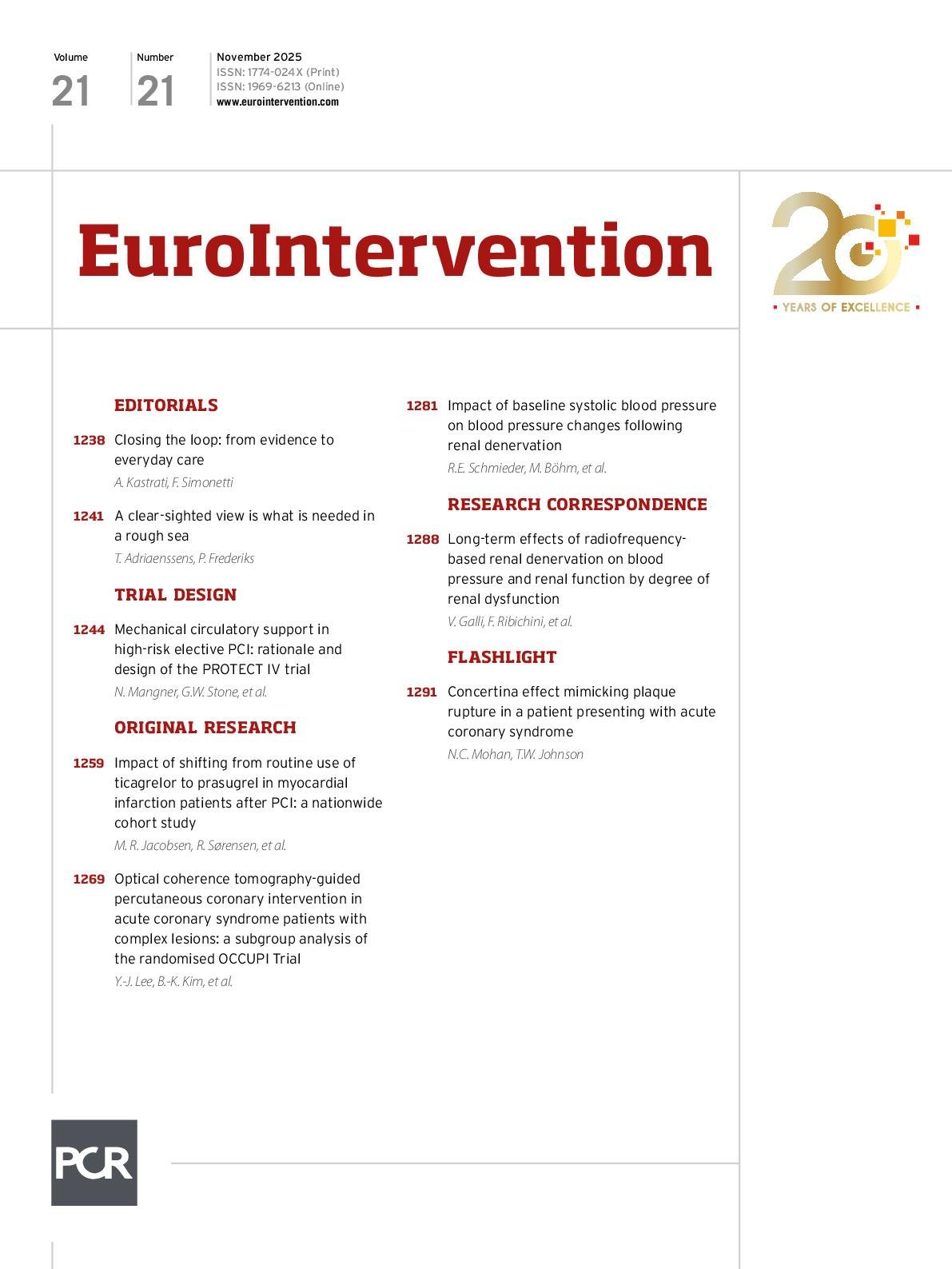A 73-year-old female presented with a one-day history of chest pain associated with a peak troponin I of 87 ng/L. Her medical history included atrial fibrillation with prior pulmonary vein isolation, bioprosthetic aortic valve replacement, previous pacemaker implantation, and breast cancer in remission. A 12-lead electrocardiogram showed a right ventricular paced rhythm. An echocardiogram 8 months prior to index presentation showed a left ventricular ejection fraction of 49% with no overt regional wall motion abnormality. Given her current presentation, she was treated for acute coronary syndrome (ACS) and commenced dual antiplatelet therapy (DAPT). Subsequently, she underwent a coronary angiogram, which revealed a right-dominant circulation with only mild-to-moderate disease. Additionally, of relevance, the large obtuse marginal (OM) branch had a tortuous course. As there was no identifiable culprit lesion on angiography (Moving image 1), a decision was made to perform optical coherence tomography (OCT) of all major epicardial vessels. On passing the guidewire into the OM branch and undertaking the OCT pullback, angiography showed the vessel to be stenotic with tandem focal stenoses (Moving image 2), while...
Sign up for free!
Join us for free and access thousands of articles from EuroIntervention, as well as presentations, videos, cases from PCRonline.com

